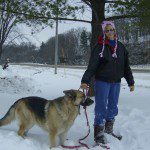How many times did we hear that one as children? I always assumed the command was generated by my skipping wildly in the kitchen, screaming at my brother in the living room, or using a bed for a trampoline. It could even have been for this unthinkable reason: Mom was just plain tired of kids!
Oh, come on!
Back in the day, parents were concerned about what was ‘good for you’ and often incorporated this vague catch-all into tiresome rules like bedtime and limitations on sweet treats. Another favorite was ‘getting outdoor exercise.’
But now I’m a grownup. So what’s the big deal about being outside? Why not just go to the gym, if you’re so inclined? Or better yet, why not just skip it? After all, we are all tired after work, aren’t we?
Not so fast. A lot of us are suffering from life-style linked diseases, especially the two we’d rather pretend never happened, like obesity and type 2 diabetes. I mean, the very word ‘obesity’…………!
I’d rather be just fat, wouldn’t you?
But, anyway, obesity and diabetes go together like peanut butter and jelly.
Did you know that being outdoors is beneficial for obesity and type 2 diabetes?
The key element seems to be sunlight. Scientists at the Universities of Edinburgh and Southampton, Scotland, (an area occasionally generating a sunlight surprise) say that sun exposure causes a natural gas called nitric oxide to be released from the skin. In fact, they concocted a way to rub nitric oxide into the skins of overfed mice, and voila! The overfed mice exhibited fewer of those hinky diabetic warning signs, like abnormal glucose levels and insulin resistance.
This sounds positive for overfed humans, as well.
Another diabetic dilemma may be high blood pressure. The same nitric oxide, naturally released from the skin with sun exposure, lowers blood pressure and has a beneficial effect on heart and blood vessels.
We all know that Vitamin D, the sunshine vitamin, strengthens bones in children. In fact, without enough vitamin D, bones just don’t form properly, causing the disease called rickets. Skeletal deformities were rather common for children during the 1800’s, when swaddling children in clothing and keeping them indoors was considered sensible to ward off contagions. Bow legs were an everyday sight, and nothing to write home about.
Lately, however, vitamin D intake for adults, especially older adults, is being recognized. In fact, the Agency for Health Care Policy and Research published Effectiveness and Safety of Vitamin D in Relation to Bone Health, a systematic review of 167 studies that found “fair evidence” of an association between circulating 25(OH)D concentrations and either increased bone-mineral density or reduced falls in older people (a result of strengthened muscles as well as strengthened bones). “Low vitamin D levels will precipitate and exacerbate osteoporosis in both men and women and cause the painful bone disease osteomalacia,” says Holick.
Broken legs trump bow legs, and falls are a leading cause of death in the elderly.
Did you know that the prevalence of multiple sclerosis is higher in the US Midwest and North than in the south? Populations at higher latitudes have a higher incidence and prevalence of MS. A review in the December 2002 issue of Toxicology by epidemiology professor Anne-Louise Ponsonby and colleagues from The Australian National University revealed that living at a latitude above 37° increased the risk of developing MS throughout life by greater than 100%.
Greater than 100%!
Why? Not enough sunshine up north, and people tend to spend less time outdoors as a result. Southerners have better teeth, too, contrary to the hillbilly caricature.
But we know outdoor living increases the chance of skin cancer, right?
Consider this: Whereas skin cancer is associated with too much UVR exposure, other cancers could result from too little. Living at higher latitudes increases the risk of dying from Hodgkin lymphoma, as well as breast, ovarian, colon, pancreatic, prostate, and other cancers, as compared with living at lower latitudes.
Statistically, those who spend a great deal of time outdoors with plenty of physical work, like farmers and ranchers, even at higher latitudes, tend to be healthier, retain muscle mass into later years, and ultimately live longer.
Mom was right!
Get outside and play!


